From Sheep to Sweater: Unraveling the Traditional Aran Sweater-Making Process
Over the centuries, the Irish wool sweater has remained an item of timeless beauty, drawing pride as a staple of a rich Irish clothing culture. It is crafted from 100% wool, giving it a warm and comfortable feel that can’t be outmatched.
The humble Irish Sweater, also known as the Irish Aran Sweater, draws its origin from the Aran Islands located off the coast of Galway, on the west coast of Ireland. Traditionally, the women knitted Aran sweaters for their husbands and children to keep them protected from harsh weather conditions.
Today, sweaters that perfectly fit fishermen and farmers, have been embraced by celebrities making them stand out in the fashion world. Hand-made Irish sweaters are still sought-after for their quality, history, heritage and durability.
In this article, we unravel the traditional Irish sweater-making process, right from the sheep up to the finished product which you can buy in our stores and online with ease!
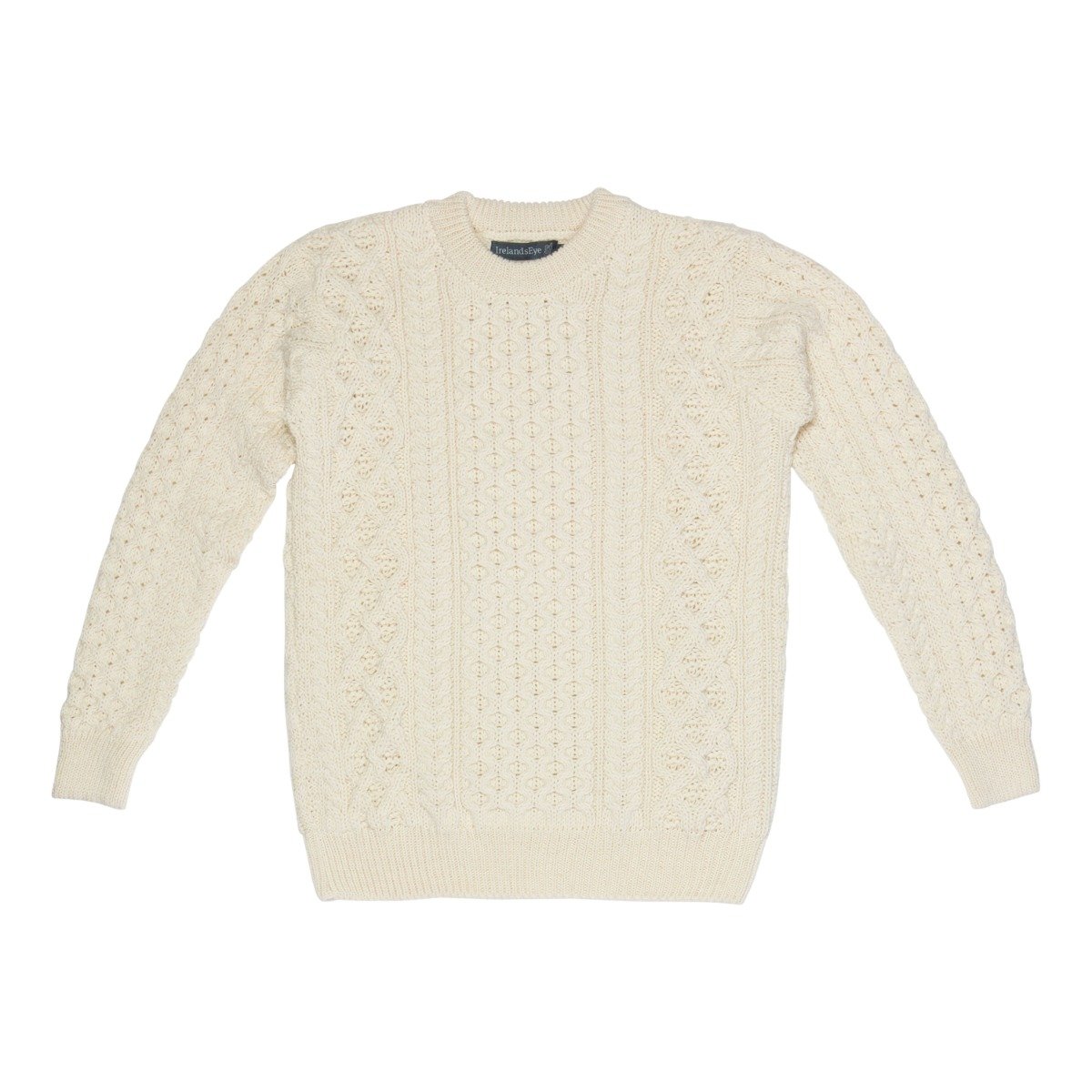
Understanding the Origins and Importance of Irish Sweaters
The Aran Islands are a group of three small islands. Namely: The Inis Mór (meaning “big island”), Inis Meáin (meaning “middle island”), and Inis Oírr (meaning “east island”). The islands are known for their rugged beauty and traditional Irish culture; as depicted in the History of The Aran sweater.
Aran sweaters were, and still are, a reflection of the knitters' lives and their families. Each family had unique sweater patterns and were carefully guarded, and kept within the same clan throughout generations. One of the historic identities attached to these sweaters was to help identify the bodies of fishermen by the beach who died in the line of duty following an accident at sea.
Having featured in the 1957 Vogue publication, these warm sweaters from the fishermen of the Aran Islands became a fashion statement that also serves as a symbol of traditional Irish culture and artistic craftsmanship. Within a few decades later, the Aran Sweaters were available for purchase globally to an extent in which celebrities began wearing them. It became an icon to reckon with. Demand for Aran sweaters grew to the extent that manufacturers had to fight to keep up with meeting the supply need.
As much as fashion keeps changing, the traditional Aran stitches have stayed a major inspiration to modern designers envisioning new styles of sweaters. The hand-knitted sweaters are certainly still engraved in the tradition of masterful Celtic craftsmanship. With the rise of modernity in art, you’ll still see the cables, diamonds, and trellises originally designed back in the 18th century.
Nowadays, you’ll find Merino wool, cashmere, or synthetic fibers also knit in the most popular Aran stitches. These options help create an amazing amount of diversity in modern Aran sweaters.
Irish Sweaters Cultural Significance and Symbolism
The women on the Aran islands improved the patterns of jumpers/ sweaters from the very beginning and gave them a unique Celtic touch. A Celtic Cross with Trinity Knots is an iconic national symbol representing the Celtic people's rich heritage and faith. It has been used as a decorative element in Irish Sweaters since the time of the memorial.
Knitting was and is taken seriously as a work of art in Ireland. The knitting designs symbolize the daily life of the island dwellers, their remote surroundings, and their religious beliefs. Each garment incorporates stitches representing Irish traditions and culture.
The traditional interpretation of Aran stitches and their symbolic meaning are later explained in this article; it's an interesting segment all together you don’t want to miss out!
Sourcing the Finest Wool: The Role of Irish Sheep
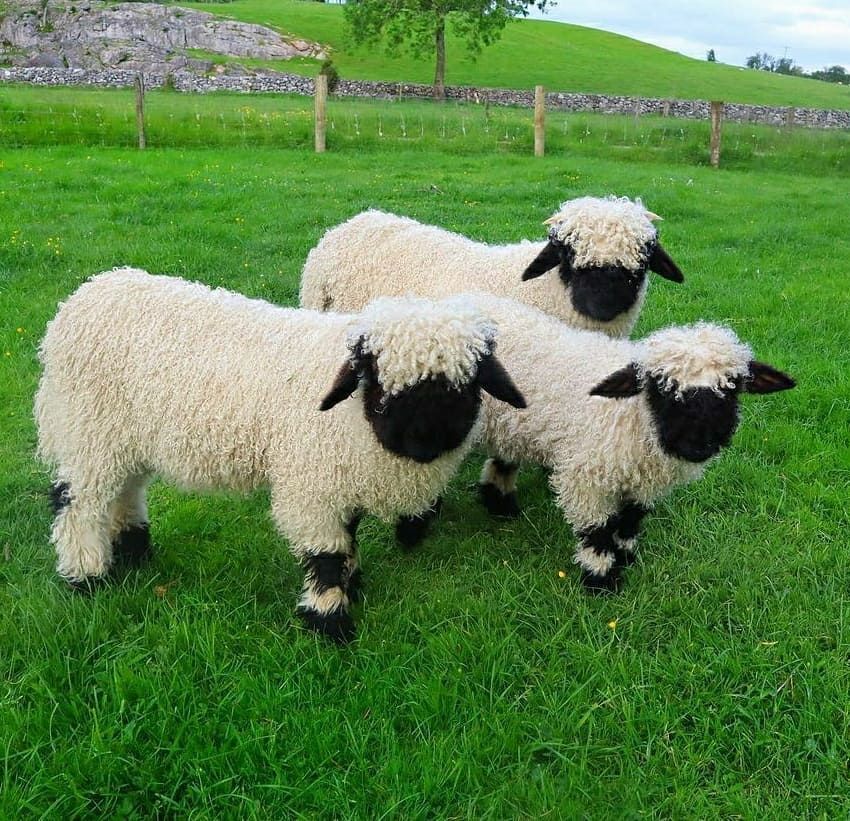
Types Of Wool and Their Benefits
As much as yarns may look similar, each yarn is different with a distinctive quality setting them unique from each other. Some are softer and less irritating, while others have that scratchy texture that many people associate with wool garments. Others have strong and longer fibers while others regulate body temperature.
Below are well-highlighted types of Aran wool and their unique benefits.
Irish Wool
This is wool from an Irish sheep. It can be coarse and some find this type of wool in their Aran sweater itchy to wear. Aran Sweaters were knitted using unscoured wool that kept its natural oils which made the sweaters water-resistant and meant they remained wearable even in wet weather.
However, today most Aran Sweaters are knit with softer wool of Merino wool in natural color as well as a variety of other colors which represent a more modern take on some classic Irish heritage.
Merino Wool
Merino is regarded as one of the world’s finest and highest quality wools. It comes from Merino sheep which originated in Spain but can now be found on most continents. It was first bred in Ireland in the 18th Century. Despite its early start in the arid conditions of Spain, modern Merino sheep have adapted well to colder climates too.
The fine wool of a Merino sheep can comfortably be worn direct to the skin for it has minimal itchy effects compared to other natural wools. Thanks to the lanolin production of the sheep, Merino wool comes with built-in antibacterial and stain-resistant qualities.
Merino wool regulates heat making it suitable for wool sweaters. This wool of will keep you warm when the weather is cold and cool when it’s warm. It’s also incredibly durable and requires very little maintenance.
Advantages of Wool Sourcing
It’s Natural
Wool is entirely natural. It’s renewable and doesn’t translate into the high carbon footprint involved in producing most synthetic fibers.
It’s Biodegradable
One of wool’s greatest properties as a sustainable material is its biodegradability. Wool is made out of keratin, the same protein as human hair. Micro-organisms in soil or water can break down woolen matter and in turn, these micro-organisms also break down, sustaining a continuous biological life cycle.
In the right conditions, tests show that wool products will almost completely degrade after six months in the ground.
It Doesn’t Involve Any Microplastics
Wool is not plastic hence does not break down into ever-increasing plastic particles. Wool in the ground or in water will biodegrade, consumed by fungi and other microorganisms.
It’s Durable
A handknit woolen garment will last you for many years. This is attributed to its natural properties. Wool fibers can bend up to 20,000 times before breaking, making them tough to tear and resistant to wear.
It’s Easy to Recycle
Wool is a naturally durable fiber. Wool garments can stay in circulation for a relatively long period of time, and this reduces their environmental footprint. Research from the International Wool Textile Organization (IWTO) shows that woolen products have the potential for several ‘lifetimes’, lasting 20-30 years and often longer.
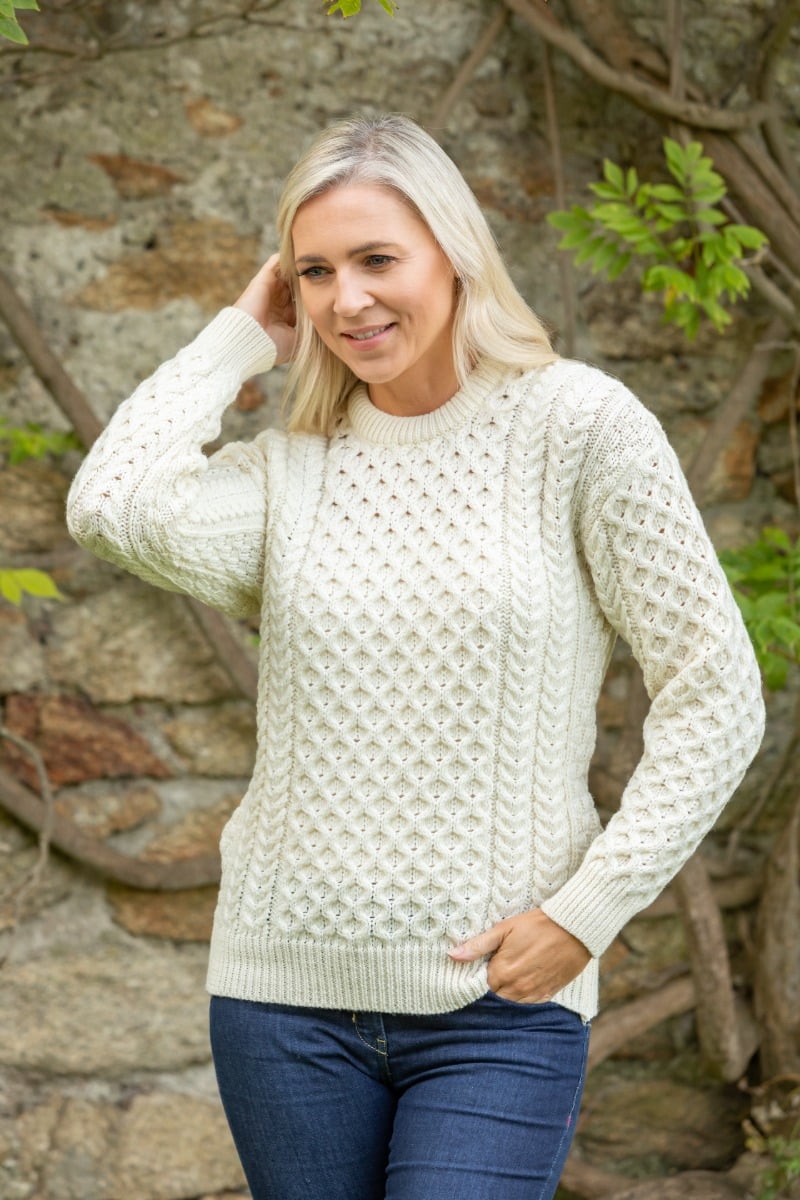
From Shearing to Spinning: The Wool Preparation Process
The wool production process can be divided into the following distinct stages:
1. Shearing
Different breeds of sheep become ready to be shorn at varying rates. Some breeds of Merinos, for instance, are shorn every 2-3 months, but others only become ready for shearing every six months or so. Merino sheep can produce between 3-18 kilograms of wool per year, and freshly-shorn wool is usually called “greasy” since it remains suffused with sheep skin oils.
2. Cleaning and Carding
The greasy wool is then cleaned, sorted into grades, and carded into long, thin strings. These carded strings are now ready to be spun.
3. Spinning
Different grades of wool are spun separately, and they are then loaded onto reels in preparation for the weaving process.
4. Weaving or Knitting
While most types of fabric feature either plain-weave or twill-weave patterns, it’s also possible to knit wool yarn using industrial knitting machines. For fabric designed to feature multiple colors, individual yarns are dyed prior to the weaving or knitting process.
5. Dyeing and Post-Treatment
If the wool fabric will only feature one color, it is sometimes dyed after the yarn has been woven or knit into a fabric. Rarely will wool be exposed to water-proofing or other chemical treatments.
Traditional Methods of Cleaning, Sorting, and Combing The Wool Fibres
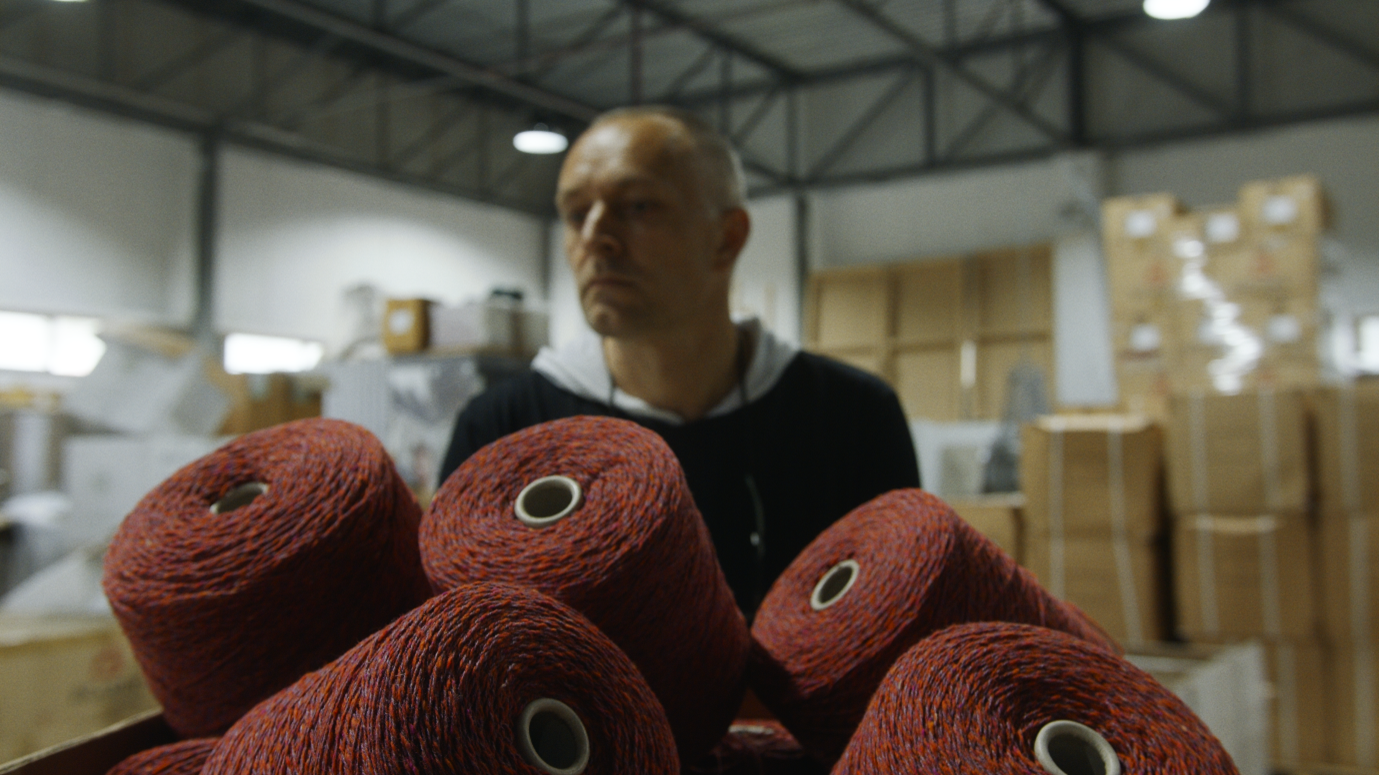
After the wool has been sheared, it then goes through the sorting stage. It is important to note that wool from ewes, rams and lambs must be sorted from each other and kept separately. This is because an ewe's wool during the lactation period is in its coarsest quality. Different quality of wool is used for wefts, warps and piles.
Therefore, while sorting wool, the factors such as the length of fibers and wool's ability to absorb dyes etc. should be taken into consideration. Wool which is going to be the source of the yarns for the pile should be supple, resilient and soft.
The quality of wool varies not only due to the different types of breeds but also depends on the geographic location of animals, climatic conditions of the region, the season of shearing, the quality and composition of fodder etc.
The Sorting Process
The fleeces are spread out on tables or on flat ground, placed preferably in a well-lit room, for the sorters who work at the tables must have the best lighting conditions in distinguishing the various kinds or qualities of wool in a fleece. The top of the table is usually made of wire netting to permit dust, sand, and other dirt to fall through when loosened from the wool.
Every fleece comprises several kinds of wool. The wool is not uniform over the entire body of the sheep. Some parts are longer than others, some are finer, some cleaner. The fleece, then, must be duly divided into parts in order to get the uniform wool desired.
The best wool comes from the sides of the sheep, the next best from the back and thighs, that from the belly and throat is inferior, and the poorest wool comes from the breech and lower part of the legs. In some cases, the fleece is divided into more than these four classes of wool.
The wool is always greasy and often very dirty hence the importance of the appropriate cleaning process.
Cleaning the Wool
The already sorted wool is then cleaned. Some of the foreign substances in the raw wool can be removed simply by washing in water, but the grease sometimes requires a solvent such as soap. The grease content of wool is important: If too much lanolin is left in the wool it will repel the dye in places, resulting in a mottled effect, yet a small amount of it makes spinning easier and deepens the colours.
Wool firstly is washed in warm water and then it is again washed in cold water. The temperature of the water is a matter of importance. If very hot water is used, the wool will lose its fluffiness; if the water is too cold, it is hard to wash out the grease.
Combing of the Wool-Carding
Wool is fitted onto the comb's teeth and torn by hands into two parts, then the two bunches of wool are put together again and the operation is repeated until all the fibers in a bunch align in the same direction more or less. This straightens and smoothens the fibers to prepare them for spinning.
The Spinning Process
By use of a spindle, fiber is pulled out of the prepared lock. Pulling just a few fibers at a time makes a very thin yarn; drafting many fibers makes a thick yarn. Twisting the drafted fibers makes yarn. Twist holds the fibers together so they don’t slip apart or rub loose; one of the spinner’s skills is determining the appropriate amount of twist for a given yarn.
After pulling and twisting a length of yarn, it’s wound onto the spindle by hand, then more yarn is drafted and twisted. When one batch of fibre is finished spinning, a join must be made by splicing on a new supply. A careful joint is invisible in the finished yarn. Yarns that are spun to uneven thickness can cause the pattern to distort.
Traditional Aran Patterns: A Closer Look at Knitting Techniques
Aran knitting patterns are heavily textured knitting patterns which are named after the Aran Islands, located off the west coast of Ireland from County Galway and County Clare. The patterns are knitted into socks, hats, vests, scarves, mittens, pillow covers, and, most commonly, sweaters.
The stitches that create the Aran knitting patterns are complex and the knitted goods are time-consuming to create. For example, a typical Aran sweater will have over 100,000 stitches and may take several months to finish. The three-dimensional effect of the twisted stitches also increases the warmth of the clothing by creating air pockets.
Knitting Techniques Used in Creating Aran Sweaters
The blackberry pattern represented the Holy Trinity. In other words, the 3 stitches that you combine into one and then create 3 new stitches from signified God, Christ and the Holy Spirit. It is believed If you used this pattern for your sweater, you would have divine protection with you.
The braiding patterns had similar mystical meanings, but above all, they also represented the sail ropes and the various knots that a sailor had to master. The frequent zigzag pattern is said to represent the rugged Ireland that sailors wanted to return to. This is how the elaborate, often intricate braided patterns that are so much a part of the classic Irish Aran sweater came into being.
The Symbolism of the Different Stitch Patterns
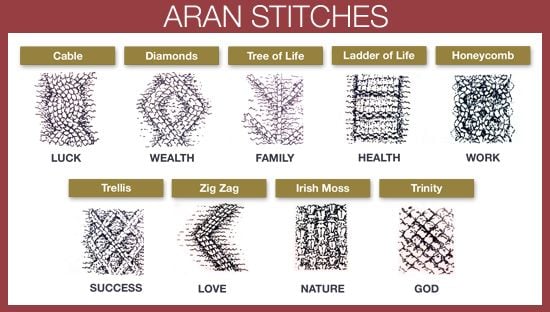
Let’s take a look at different Aran stitches and their symbolic meaning.
Cable Stitch
The most popular Aran stitch is the cable, which stands for a fisherman’s ropes. The cable stitch represents the wish for safety and good fortune at sea. Wear a cable stitch when you want to feel protected in the world and ward off bad luck.
Diamond Stitch
The diamond stitch supposedly symbolizes the small fields on the islands. These fields were worked intensively by local farmers, and this stitch may be said to represent hopes of good luck, success and wealth in farming on the Aran Islands. Diamond patterns might also represent the fishing nets.
Zig Zag Stitch
Zig zag stitches, sometimes known as Marriage Lines, can be used to represent the typical highs and lows of matrimony and marriage life. They may also be used to represent the twisting cliff paths that are on the islands.
Honeycomb Stitch
In Aran knitting patterns the honeycomb stitch, signifying the bee, is often used to represent both hard work and its rewards. The honeycomb stitch may be included as a symbol of good luck, signifying plenty.
Trellis Stitch
Trellis stitch recalls the stone-walled fields of the Northwestern farming communities, in the upland areas in Ireland where rock outcrops naturally or large stones exist in quantity in the soil such as in the Aran Islands. The stitch is useful for adding dimension and is used as a symbol of protection.
Hand Knitting vs. Machine Knitting: The Art of Craftsmanship
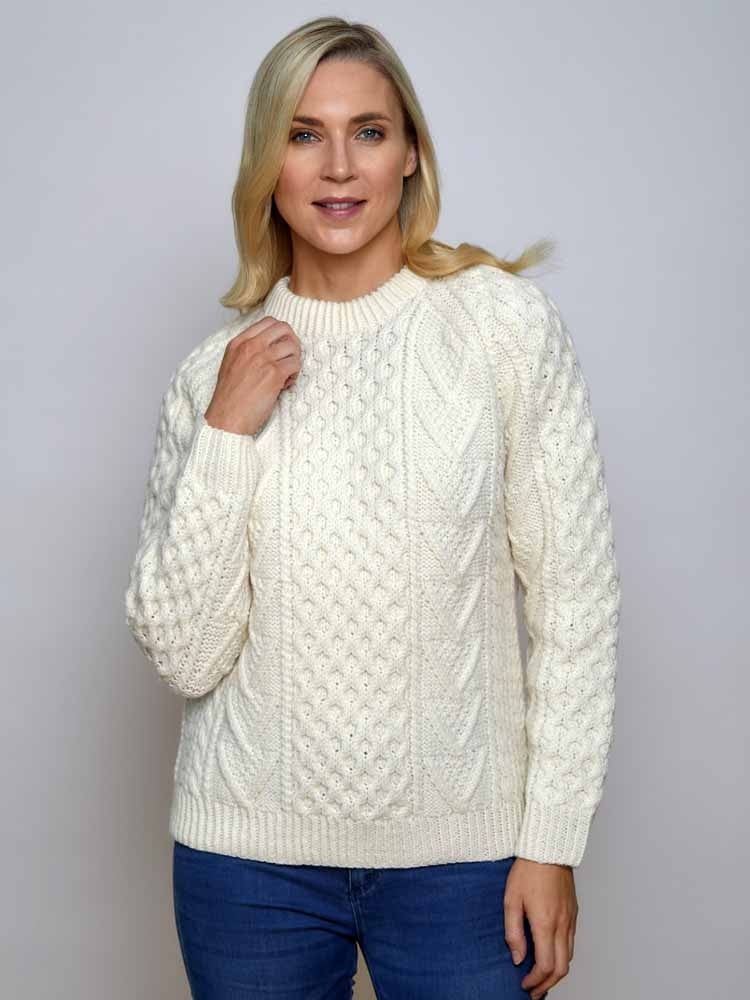
Hand-knitting had been in existed for more than a thousand years ago. Where and how this art was invented is still a mystery. Some people believe that knitting began when primitive man made webs out of roots.
Others think that Arabian nomads carried the craft into Europe. Still, others think that this art originated in Persia. Regardless of these many assumptions, the fact is hand-knitting has stood out as a craft up to this very day.
We will cover different knitting techniques employed by skilled artisans right here below.
Traditional Hand Knitting Techniques Employed by Skilled Artisans
- Flat Knitting - It uses two straight needles to make generally two-dimensional (flat) pieces. Just like the name suggests, it is usually used to knit flat pieces like scarves, blankets, afghans, and the backs, fronts and arms of sweaters (pullovers)
- Circular Knitting - (also called "knitting in the round") creates a seamless tube. Knitting is worked in rounds (the equivalent of rows in flat knitting).
Originally, circular knitting was done using a set of four or five double-pointed knitting needles.
- Felting - This is a technique used by knitters to refer to the joining knitted or woven animal fibers. The finished product is put in hot water and agitated until it starts to shrink. The result typically has a felt-like appearance but has reduced dimensions. Bags, mittens, vests, socks, slippers, and hats are just a few items that can be felted.
- Needle felting - It is a technique used to add decoration to a knitted or felted piece, where raw roving is applied using a very sharp barbed felting needle by repeatedly piercing the roving and background together. Once washed in hot water, the appliqued decoration is fused with the background. Felted knitting can be cut with scissors without concern about fraying.
Hand Knitting Vs Machine Knitting Methods
- Portability - Hand-knitting is portable while machine knitting requires equipment that may not be easy to carry around.
- Stitches aren’t created equal – Not all stitches are created the same with a machine, as they are with needles. There are even some that are impossible to recreate unlike in hand knitting
- Differences in gauge – The ideal scenario would be to choose a machine that allows you to change the position or size of the needles, to meet a different gauge. Unfortunately, many machines have needles locked in place, which means you can’t adapt to different gauges unlike in handknitting.
- Speed – One of the biggest benefits as to why many knitters are moving to machine knitting is speed. When it comes to knitting scarves, sweaters, blankets, or other items for your family and home, using a knitting machine will mean you finish your projects much faster compared to handknitting where the work may take days or even months to complete.
No slipped stitches or crooked cables – Using a knitting machine means your efficiency will improve, along with your accuracy. Losing attention while hand knitting may lead to dropping stitches or knitting crooked cables
Handcrafted Aran Sweaters and Their Unique Characteristics
Whether originally hand-knitted, or machine-made, Aran sweaters are easy to distinguish by their color, pattern, and type of wool.
- Color - Most sweaters are kept in their natural color, although it is possible to find Aran sweaters in other colors today that reflect the Irish countryside.
- Type of Wool - Originally, all Aran sweaters were made with unscoured wool. This is wool that retains its natural oils and lanolin. This makes the wool water-resistant. In fact, it can absorb 30% of its weight in water before beginning to feel wet.
Patterning - It isn’t a function of color choices because only a single color yarn is used, but rather the different knitting stitches used. This labor-intensive process is one of the reasons very few Aran sweaters are still made by hand.
Finishing Touches: Blocking, Sewing, and Embellishments
Importance of Blocking
Blocking is the final stage of fabric production. It aids in giving the finished product a better shape.
There are 2 main types of blocking, wet blocking and steam blocking. The first consists of hand-washing your finished item prior to blocking while the second consists of applying steam with an iron.
Both methods aim to relax the fibers, making each stitch a little more even and plump.
Wet blocking is a little bit safer as you do not need to worry about the heat of the iron damaging the fabric. It also gives you the opportunity to add some wool wash to your fabric which will increase its softness.
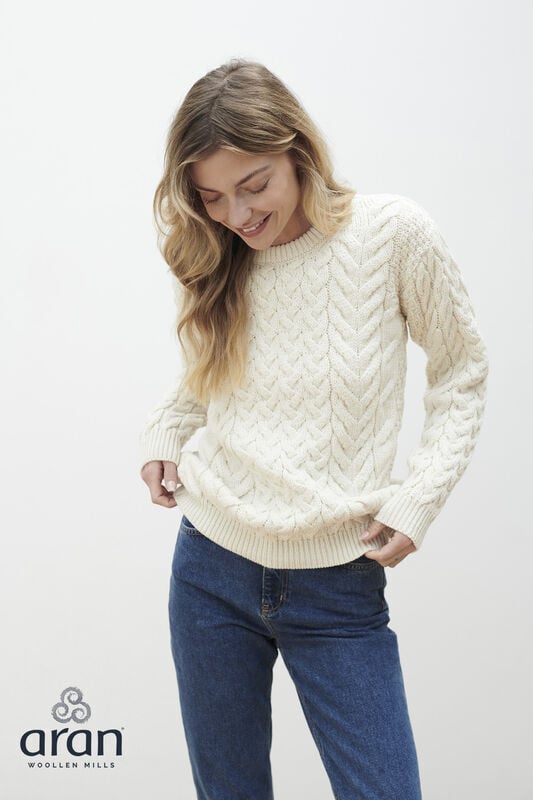
Sewing Techniques
Cut and Sew (C&S)
It’s a common method where the fabric is knitted, cut to shape and then finally assembled by an overlocking sewing machine. Fabric blanks can be knitted as quickly
cutting of the fabric is quick and so the garment can be put into the sewing line rapidly very fast production lead time.
Fully Fashioned
As for this technique instead of knitting wide blanks of fabric to be cut into pieces [C&S], each piece is separately knitted exactly to the required shape-Fashioning. This means a Vee neck fully fashioned sweater has 5 pieces –a front body panel, a back body panel, a left sleeve, a right sleeve and a neck trim.
These edges of the 5 pieces are then joined together, stitch by stitch. However, the pieces could also be joined by the same sewing machines used for Cut and Sew operations.
Seamless
It is a seamless, computerized version of the old hand knitters technique called ‘knitting in the round.
Instead of knitting separate pieces like the fully fashioned method, the Seamless machine knits the sleeves and body sections as tubes at the same time and then transfers the pieces together with a knitting technique.
When the knitting programme is finished, the machine produces a complete garment.
Fabric Embellishment Techniques
The practice of decorating a fabric’s surface using various techniques after it has been produced is referred to as surface embellishment. Below are some embellishment techniques used:
Buttons: Attaching buttons to a garment adds more texture and detail than almost any other embellishment technique. Buttons come in all sorts of shapes, sizes, colors, materials, and textures, from satin-covered to shell to antique brass buttons that have been polished for years.
With this technique, designers can enhance the design by using unique buttons that catch the eye of onlookers. This trend is currently highly adopted by designers.
Ribbons & Lace: From bright rainbow ribbons with stars to diamond-studded gold ribbons, as well as classic black velvet ones, they can give new life and volume to garments when appropriately incorporated into their designs. Such beautiful additions offer endless possibilities when exploring different looks!
Sequins & Studs: This form of surface embellishment usually comes with some bling! All types of sequins, like bugle beads, can be stitched onto the fabric’s surface to create striking patterns which go along very well with night-time events.
Embroidered Jeans: Another popularly seen use for decorative stitching is on jeans pockets. Each pocket section carries its own unique embroidery design that gives each pair its own individuality through their added style details — proving once again what creative wonders fabric surface embellishment techniques have in store!
Caring for Your Aran Sweater: Maintenance and Longevity
Since traditional Aran sweaters are made from wool, so they require a little extra care when handling to maintain their shape and longevity.
Here are some care to apply when washing, drying, and storing Irish sweaters.
Washing Tips
- Hand wash the sweater in lukewarm water using only a small amount of mild detergent after having soaked it for 30mins using lukewarm water. Extreme temperatures can damage the wool fibers and cause the sweater to shrink or the wool to lose its softness.
- Gently massage the sweater in the detergent and avoid over-handling. It can damage the knit patterns. Rinse if necessary
- Press the sweater out by towel rolling it, often called the blocking technique. This way you aren't wringing out or pulling at the sweater, causing the shape to be deformed. With this technique, you roll or fold the sweater into a shape that can be squeezed or pressed within the protective layer of the towel. Do this several times, until you've gotten rid of as much water as possible.
Note that these tips are not exhaustive, you can always follow the care instructions instructed in the fabric in cases where in doubt.
Drying Your Irish Aran Sweater
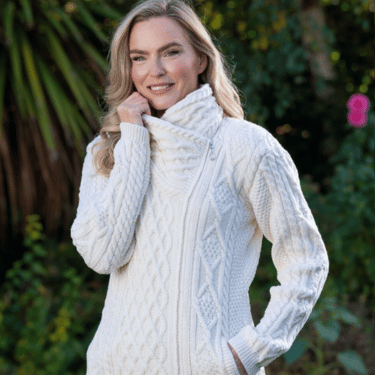
Avoid hanging up your sweater yet, instead lay it out flat on a clotheshorse or on a towel in an area that has both good air circulation and some ambient heat. No direct heat such as radiators as this will damage the sweater. While the sweater is slightly damp, try to reshape it back to its original form.
Storage
Again, don't hang the sweater as the shoulders can stretch and its weight distorts the body but instead fold it and keep it in a drawer.
The truth is, your Aran sweater lasts as long as you care for them. By applying the necessary care as discussed above, you will not only use your Aran sweater for as long as it fits you but it will remain a top-quality fashionable garment you can always rock. Adequately caring for it sustains its durability and quality.
For a further understanding of How to Care for Your Aran Sweater, make good use of our available coverage.
Own a Piece of Iconic Irish Knitwear from The Sweater Shop
Finished products have to fulfil all requirements on quality by factoring in different measures required right from raw materials to the safe production process-Irish Sweater similar turn.
Taking it from the breed of the sheep to the quality of the wool, the hand-knitted Irish Aran Sweater has been regarded as an eternal symbol of the Islands. Its long history, unique culture and time-honoured traditions of captivating Irish design keep the Islands independent from modern ways on the mainland.
In addition, this timeless fashion garment continues to be adopted by high street brands and fashion houses alike, as the intricate stitches, magical history and beauty of the original globally.
For authentic Irish fisherman sweaters that celebrate traditional craftsmanship, explore our unique collection of mens', womens' and kids' Irish sweaters online today - we won't be beaten on price, quality or pure, authentic Irishness!

